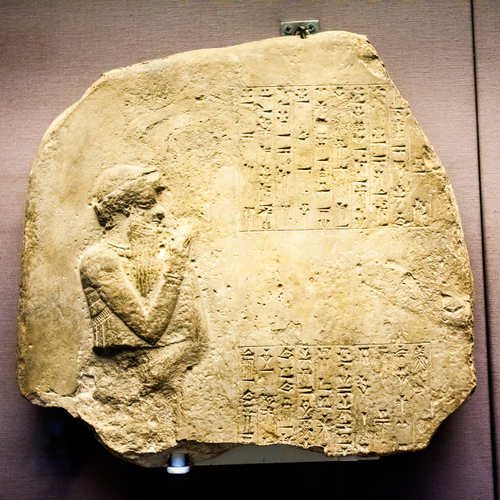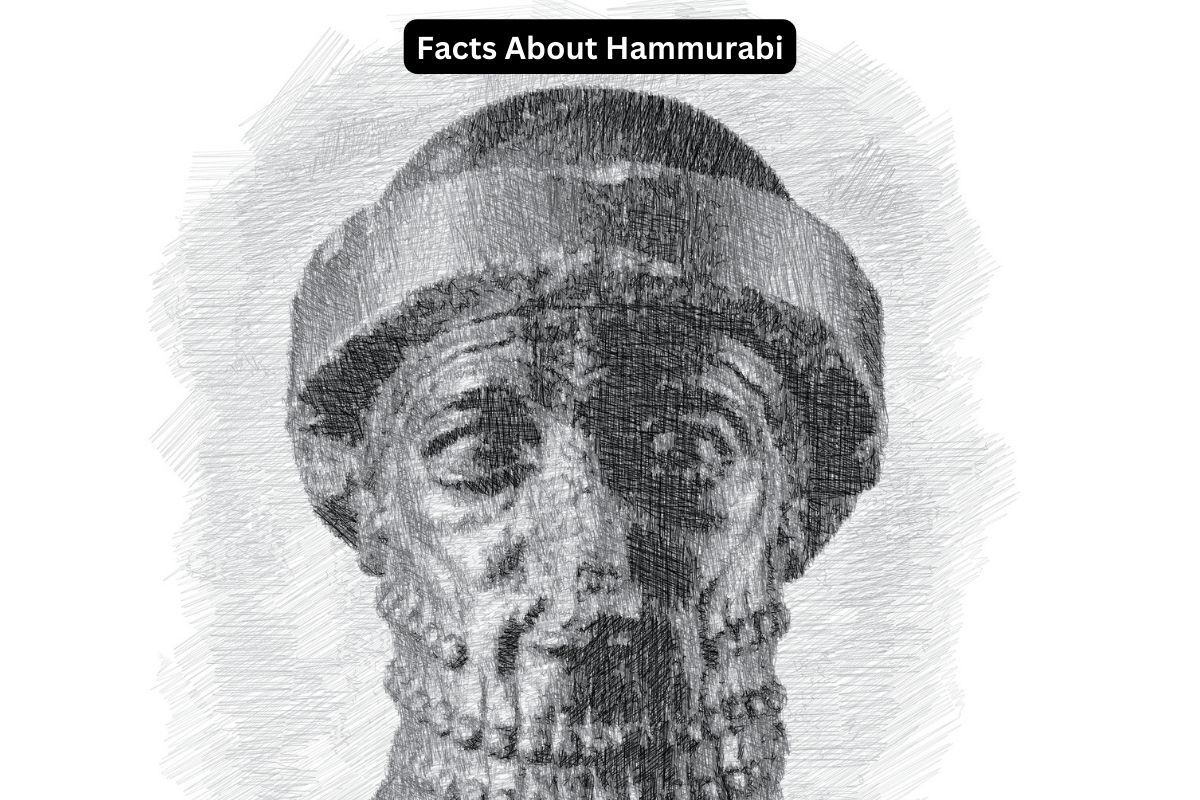Hammurabi was an ancient Babylonian king who ruled from approximately 1792 BCE to 1750 BCE. He is renowned for his Code of Hammurabi, one of the earliest known legal codes in human history.
This code, inscribed on a stone pillar, outlined laws that governed various aspects of Babylonian society and introduced the principle of “an eye for an eye.”
Hammurabi’s reign also saw significant agricultural reforms, military conquests, and the promotion of the worship of Marduk, the chief god of Babylon.
His legacy endures through his contributions to law and governance, which continue to be studied and admired by historians and legal scholars today.
Hammurabi Facts
1. Hammurabi ruled ancient Babylon around 1792 BCE to 1750 BCE
Hammurabi was an ancient Mesopotamian king who ruled over the Babylonian Empire from approximately 1792 BCE to 1750 BCE. This period was during the Bronze Age, and his reign had a significant impact on the region’s history.
2. He’s famous for the Code of Hammurabi, one of the earliest known legal codes
Hammurabi’s most enduring legacy is the Code of Hammurabi, which is one of the earliest known legal codes in human history. This code was a comprehensive set of laws and regulations that governed various aspects of Babylonian society during his rule.
Also Read: Hammurabi Accomplishments
The Code of Hammurabi was inscribed on a large stone pillar, known as a stele, made of black diorite. The stele stood about seven feet tall and contained 282 laws written in Akkadian cuneiform script.
These laws were prominently displayed in the city of Babylon, where they could be seen by the general population, emphasizing the king’s commitment to justice and order in society.

3. This code had 282 laws inscribed on a stone pillar in Babylon
The Code of Hammurabi consisted of 282 laws. These laws were meticulously inscribed on a large stone pillar, known as a stele, made of black diorite.
The stele was created during Hammurabi’s reign and was prominently displayed in the city of Babylon, which served as the capital of his empire.
These laws covered various aspects of Babylonian society and were publicly displayed, emphasizing Hammurabi’s commitment to justice and transparency.
4. It introduced the principle of “an eye for an eye” in legal matters
One of the most well-known principles of the Code of Hammurabi is the concept of “an eye for an eye.” This principle, also known as lex talionis, meant that punishments for crimes should be proportionate and reflective of the harm done.
Also Read: Timeline of Hammurabi
For example, if someone caused physical harm to another person, they would receive a punishment of similar severity.
While “an eye for an eye” is often associated with Hammurabi’s code, it’s important to note that the code also included other legal provisions, covering areas such as property disputes, contracts, marriage, and inheritance.
5. The code covered civil, criminal, and economic laws
The Code of Hammurabi was a comprehensive legal document that covered a wide range of issues faced by the society of ancient Babylon.
Some key legal principles and aspects of the code include:
- Distinctions based on social class: The code recognized different social classes, and the severity of punishments often depended on the social status of the individuals involved. For instance, crimes against nobles often carried harsher penalties than those against commoners.
- Protection of property rights: The code included provisions for the protection of property rights, including regulations regarding the sale of land and the enforcement of contracts.
- Family and marital matters: It addressed issues related to family law, such as marriage, divorce, and inheritance, outlining rules for matters like dowries and adultery.
- Commercial regulations: The code also contained provisions regarding trade and commerce, including setting standard prices for goods and services to prevent price gouging.
- Personal injury and liability: It established rules for compensation in cases of personal injury, outlining the compensation owed to victims and their families.

6. Hammurabi implemented agricultural reforms and regulated irrigation
Hammurabi implemented agricultural reforms to improve the state of agriculture in Babylon. These reforms were aimed at ensuring the proper cultivation of land and the equitable distribution of resources:
- Regulation of irrigation: Hammurabi took measures to regulate the use of irrigation canals to ensure that water resources were distributed fairly among farmers. This helped prevent disputes over water rights and ensured more stable agricultural production.
- Standardized measurements and prices: The code standardized measurements for agricultural produce and established fair prices for goods. This provided some stability and predictability in agricultural trade.
7. He conducted military campaigns to expand the Babylonian Empire
During his reign, Hammurabi conducted military campaigns aimed at expanding and consolidating the Babylonian Empire:
- Conquests: He led successful military campaigns against neighboring city-states and regions, including Elam, Mari, and Larsa. These conquests expanded Babylon’s territory and influence.
- Consolidation: Hammurabi also worked to consolidate his empire by establishing garrisons and administrative centers in newly conquered territories. This helped maintain control over the conquered regions.
8. Hammurabi was involved in constructing temples, walls, and canals
Hammurabi was involved in several public works projects during his reign to enhance the infrastructure and prosperity of the Babylonian Empire:
- Temple construction: He sponsored the construction and renovation of temples dedicated to various gods in Babylon and other cities within his empire. Temples were not only religious centers but also important economic and administrative hubs.
- Defensive walls: Hammurabi also invested in the construction and maintenance of defensive walls around cities, which helped protect the empire’s borders and maintain security within its territories.
- Canals and irrigation: In addition to regulating irrigation, Hammurabi oversaw the construction and maintenance of canals to facilitate agricultural activities. Proper irrigation and water management were crucial for the empire’s agricultural success.
9. He promoted the worship of Marduk, a chief god in Babylonian religion
As king, Hammurabi had a religious role in Babylonian society. The Babylonians practiced polytheism, and their religion played a significant role in daily life.
Hammurabi promoted the worship of Marduk, the chief god of the Babylonian pantheon. He elevated Marduk’s status to a supreme deity and made his temple, the Esagila, one of the most prominent religious centers in Babylon.
He participated in various religious ceremonies and rituals, which were essential for maintaining the favor of the gods and ensuring the prosperity of the empire.
10. Hammurabi’s legacy includes his contributions to law and governance
Hammurabi’s legacy is enduring and has left a significant mark on human history:
- Legal influence: The Code of Hammurabi served as a foundational legal document and influenced the development of subsequent legal systems in the ancient world. Concepts such as “an eye for an eye” and the idea of written legal codes had a lasting impact on the evolution of legal thought.
- Historical importance: Hammurabi’s reign and accomplishments are important for understanding the history of Mesopotamia and the development of early civilization.
- Historical records: The inscriptions on the Code of Hammurabi’s stele also provide valuable historical information about the social, economic, and political conditions of ancient Babylon during his reign.
